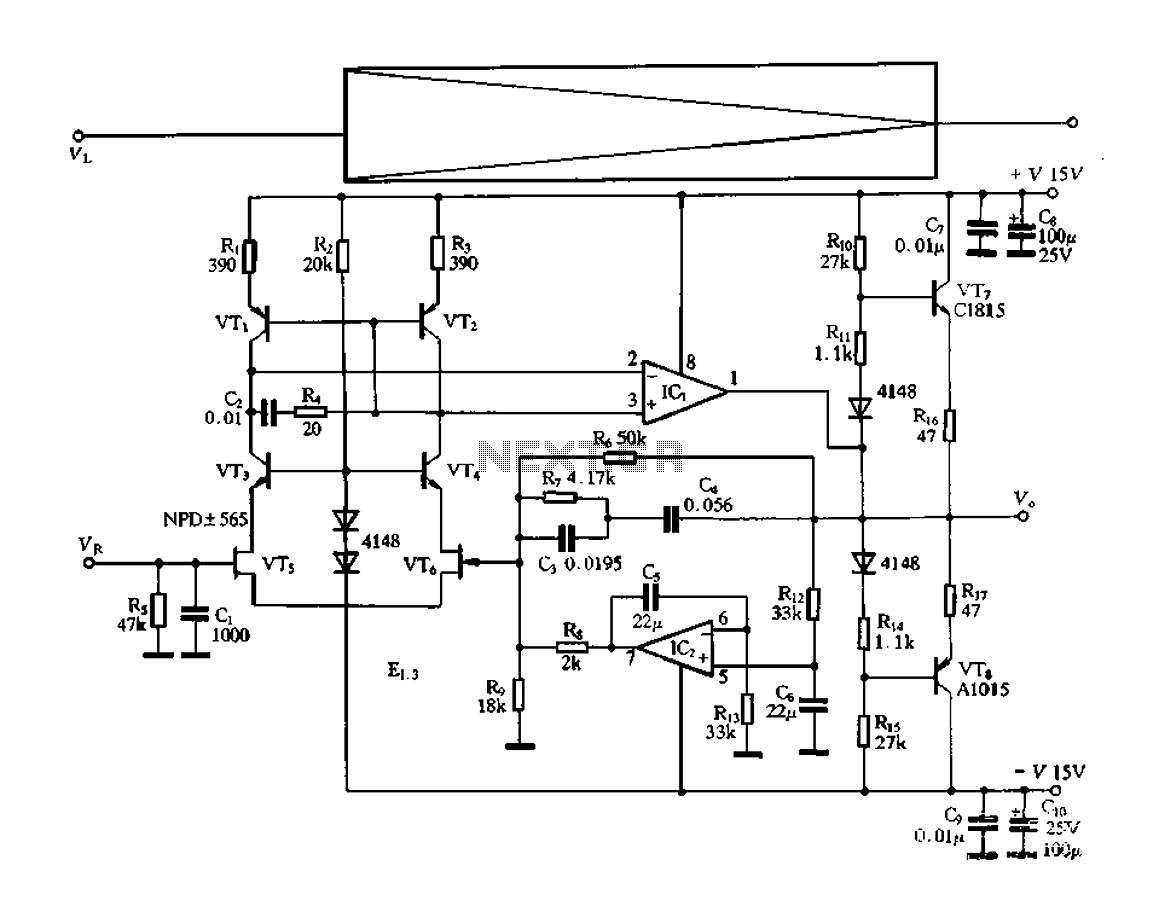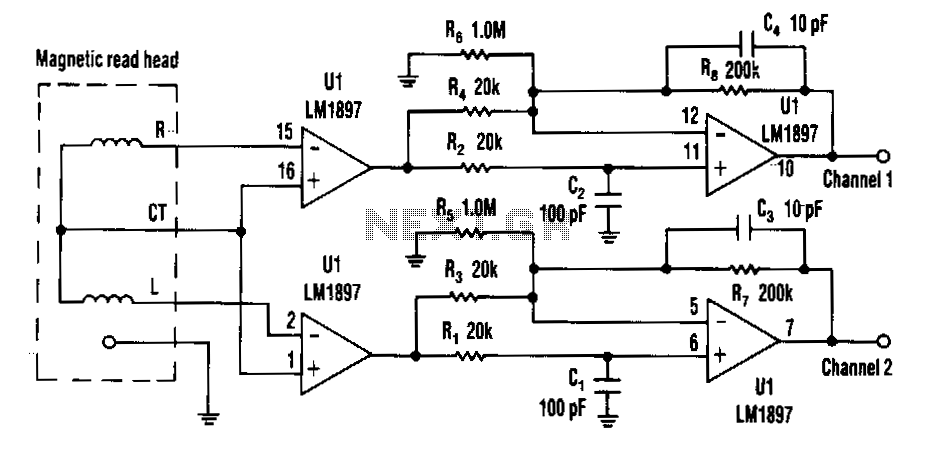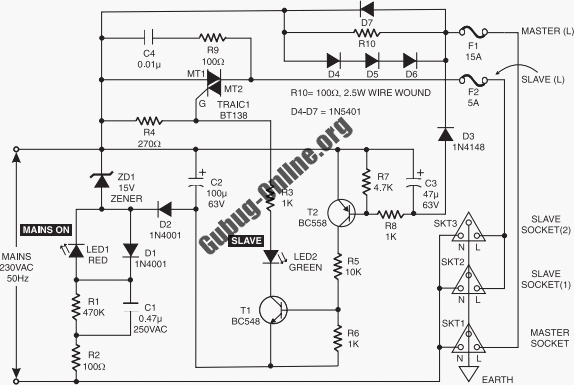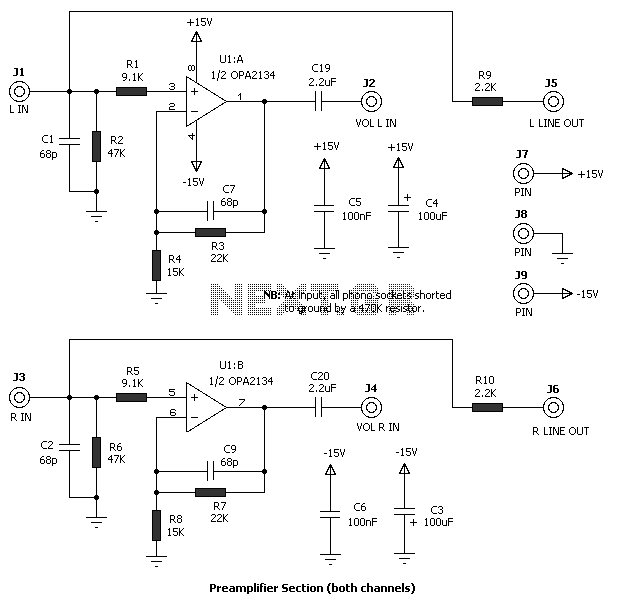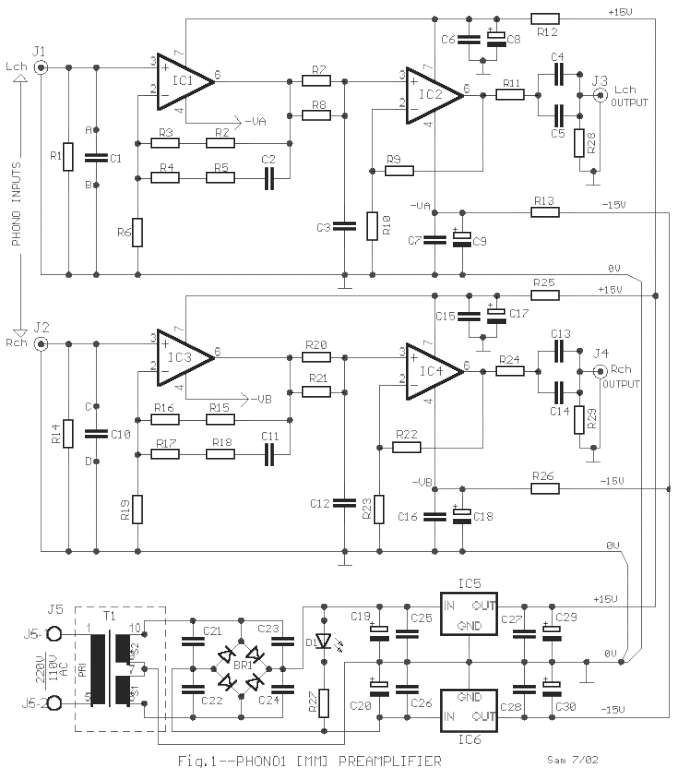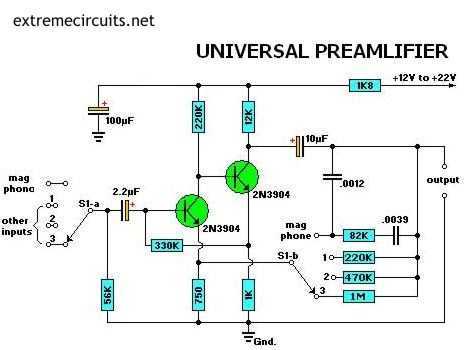
Preamplifier For Soundcard
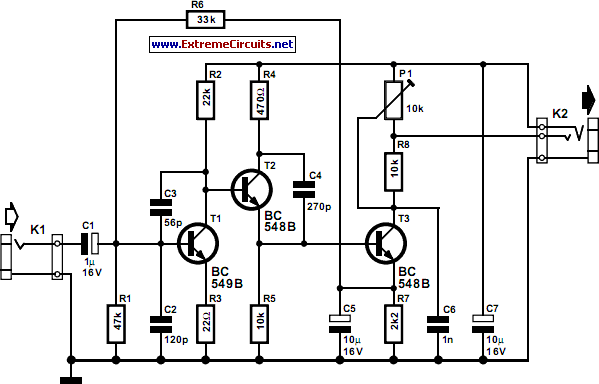
This circuit is designed for use with inductive pick-up elements and dynamic microphones. Most soundcards feature a line input and a dedicated input for electret (condenser) microphones. To connect an inductive tape recorder head or a dynamic microphone, an additional preamplifier is necessary. Despite advancements in integrated microelectronics, a circuit constructed from discrete components remains relevant. The preamplifier outlined here illustrates that discrete transistors will continue to have a place in electronic design. This preamplifier is compatible with soundcards or the microphone input of a modem. Typically, soundcards have sockets for line-level signals (stereo) and a mono input for electret microphones. For the intended applications, both inputs can be used, provided that the source signal is adequately amplified. The microphone input on the soundcard was selected due to the line inputs often being occupied and because the bias voltage supplied by the microphone input eliminates the need for a separate power supply for the preamplifier. The microphone input usually features a 3.5-mm stereo jack socket, although only one channel is utilized. The unused contact is employed by the soundcard to provide a bias voltage to the mono electret microphone, which the preamplifier accepts, negating the requirement for an external power supply. The preamplifier consists of three stages, following traditional transistor design principles. Capacitor C1 decouples the signal from the microphone or pick-up element and feeds it into the first stage, which utilizes a transistor in emitter configuration, biased for a current gain of approximately 300 times. Together with the source impedance of the microphone or pick-up element, capacitors C2 and C3 form a low-pass filter that slightly reduces the bandwidth. The output low-pass filter, R2-C3, decreases the dynamic collector resistance at higher frequencies, thus reducing gain in the upper frequency spectrum and mitigating oscillation tendencies. The first high-gain stage is followed by T2, which does not contribute to overall gain as the output signal is taken from the emitter (common-collector circuit). T2 serves as an impedance converter, with C4 minimizing oscillation risks. The output stage, centered around T3, is configured as a common-emitter circuit where preset P1 adjusts voltage amplification. T3 is biased using a direct-current feedback circuit made up of components R7 and C5, supplemented by a feedback path returning to the input transistor via R6, ensuring stable DC operation of the preamplifier. The circuit is compact enough for construction on a piece of veroboard or stripboard. To avoid interference from external sources, the completed circuit should be housed in a properly shielded metal enclosure, with connections to the input source and sound card made using shielded cables. The preamplifier offers a frequency-linear response, and if the source signal requires frequency correction (e.g., RIAA), a matching linearization circuit should be employed when the relevant signals are processed by the computer.
This preamplifier circuit is designed to enhance the performance of inductive pick-up elements and dynamic microphones by providing necessary amplification and impedance matching, thus ensuring compatibility with various soundcard inputs. The use of discrete components allows for a customizable design that can be adapted to specific requirements while maintaining signal integrity. The careful selection of capacitors and resistors ensures that the circuit maintains a linear frequency response, which is crucial for applications requiring accurate sound reproduction. Additionally, the inclusion of feedback mechanisms enhances the stability of the circuit, preventing unwanted oscillations and ensuring reliable operation. The compact design facilitates easy integration into various audio systems, making it a versatile solution for audio engineers and hobbyists alike. Proper shielding and use of screened cables further protect the circuit from external noise, enhancing the quality of the audio signal processed through the soundcard.This circuit can be used for inductive pick-up elements and dynamic microphones Most soundcards have a line` input and one for an electret (condenser) microphone. To be able to connect an inductive tape-recorder head or a dynamic microphone, an add-on preamplifier is needed.
Even in this day and age of integrated microelectronics, a transistorised circuit built from discrete part has a right of existence. The preamplifier described in this short article goes to show that it will be some time before discrete transistors are part of the silicon heritage. The preamplifier is suitable for use with a soundcard or the microphone input of a modem. As you will probably know, most sound-cards have input sockets for signals at line level (stereo), as well as one for a (mono) electret microphone.
For the applications we have in mind, connecting-up an inductive pick-up element or a dynamic microphone, both inputs are in principle suitable, provided the source signal is amplified as required. The author eventually chose the microphone input on the soundcard. Firstly, because the line inputs are usually occupied, and secondly, because the bias voltage supplied by the micro-phone input eliminates a separate power supply for the preamplifier.
The microphone input of a soundcard will typically consist of a 3. 5-mm jack socket in stereo version, although only one channel is available. The free contact is used by the soundcard to supply a bias voltage to the mono electret microphone. This voltage is accepted with thanks by the present preamplifier, and conveniently obviates an external (mains adaptor) power supply. In true transistor-design fashion, the preamplifier consists of three stages. Capacitor C1 decouples the signal received from the microphone or pick-up element, and feeds it to the input of the first stage, a transistor in emitter configuration, biased to provide a current amplification of about 300 times.
Together with the source impedance of the microphone or pick-up element, capacitors C2 and C3 form a low-pass filter which lightly reduces the bandwidth. In addition, the output low-pass, R2-C3, reduces the dynamic collector resistance at higher frequencies.
In this way, the filter reduces the gain in the higher part of the frequency spectrum and so helps to eliminate any oscillation tendencies. The first, high-gain, stage is terminated by T2. Unlike T1, this transistor does not add to the overall gain, because the output signal is taken from the emitter (common-collector circuit).
T2 thus acts as an impedance converter, with C4 reducing any tendency to oscillation. The output stage around T3 is a common-emitter circuit again. In it, preset P1 determines the voltage amplification. T3 is biased by means of a direct-current feedback circuit based on components R7 and C5. To this is added an overruling` dc feedback path back to the input transistor, via R6. This measure guarantees good dc stability in the preamplifier. The circuit is small enough to be built on a piece of veroboard or stripboard, and yet remain reasonably compact. To prevent interference from external sources, the completed board should be mounted in a properly screened (metal) enclosure, with the connections to the input source and the sound card made in screened cable.
The preamplifier provides a frequency-linear response. In case the source signal is marked by frequency correction (e. g. , RIAA), then a matching linearization circuit should be used if the relevant signals are used by the computer. 🔗 External reference
This preamplifier circuit is designed to enhance the performance of inductive pick-up elements and dynamic microphones by providing necessary amplification and impedance matching, thus ensuring compatibility with various soundcard inputs. The use of discrete components allows for a customizable design that can be adapted to specific requirements while maintaining signal integrity. The careful selection of capacitors and resistors ensures that the circuit maintains a linear frequency response, which is crucial for applications requiring accurate sound reproduction. Additionally, the inclusion of feedback mechanisms enhances the stability of the circuit, preventing unwanted oscillations and ensuring reliable operation. The compact design facilitates easy integration into various audio systems, making it a versatile solution for audio engineers and hobbyists alike. Proper shielding and use of screened cables further protect the circuit from external noise, enhancing the quality of the audio signal processed through the soundcard.This circuit can be used for inductive pick-up elements and dynamic microphones Most soundcards have a line` input and one for an electret (condenser) microphone. To be able to connect an inductive tape-recorder head or a dynamic microphone, an add-on preamplifier is needed.
Even in this day and age of integrated microelectronics, a transistorised circuit built from discrete part has a right of existence. The preamplifier described in this short article goes to show that it will be some time before discrete transistors are part of the silicon heritage. The preamplifier is suitable for use with a soundcard or the microphone input of a modem. As you will probably know, most sound-cards have input sockets for signals at line level (stereo), as well as one for a (mono) electret microphone.
For the applications we have in mind, connecting-up an inductive pick-up element or a dynamic microphone, both inputs are in principle suitable, provided the source signal is amplified as required. The author eventually chose the microphone input on the soundcard. Firstly, because the line inputs are usually occupied, and secondly, because the bias voltage supplied by the micro-phone input eliminates a separate power supply for the preamplifier.
The microphone input of a soundcard will typically consist of a 3. 5-mm jack socket in stereo version, although only one channel is available. The free contact is used by the soundcard to supply a bias voltage to the mono electret microphone. This voltage is accepted with thanks by the present preamplifier, and conveniently obviates an external (mains adaptor) power supply. In true transistor-design fashion, the preamplifier consists of three stages. Capacitor C1 decouples the signal received from the microphone or pick-up element, and feeds it to the input of the first stage, a transistor in emitter configuration, biased to provide a current amplification of about 300 times.
Together with the source impedance of the microphone or pick-up element, capacitors C2 and C3 form a low-pass filter which lightly reduces the bandwidth. In addition, the output low-pass, R2-C3, reduces the dynamic collector resistance at higher frequencies.
In this way, the filter reduces the gain in the higher part of the frequency spectrum and so helps to eliminate any oscillation tendencies. The first, high-gain, stage is terminated by T2. Unlike T1, this transistor does not add to the overall gain, because the output signal is taken from the emitter (common-collector circuit).
T2 thus acts as an impedance converter, with C4 reducing any tendency to oscillation. The output stage around T3 is a common-emitter circuit again. In it, preset P1 determines the voltage amplification. T3 is biased by means of a direct-current feedback circuit based on components R7 and C5. To this is added an overruling` dc feedback path back to the input transistor, via R6. This measure guarantees good dc stability in the preamplifier. The circuit is small enough to be built on a piece of veroboard or stripboard, and yet remain reasonably compact. To prevent interference from external sources, the completed board should be mounted in a properly screened (metal) enclosure, with the connections to the input source and the sound card made in screened cable.
The preamplifier provides a frequency-linear response. In case the source signal is marked by frequency correction (e. g. , RIAA), then a matching linearization circuit should be used if the relevant signals are used by the computer. 🔗 External reference
